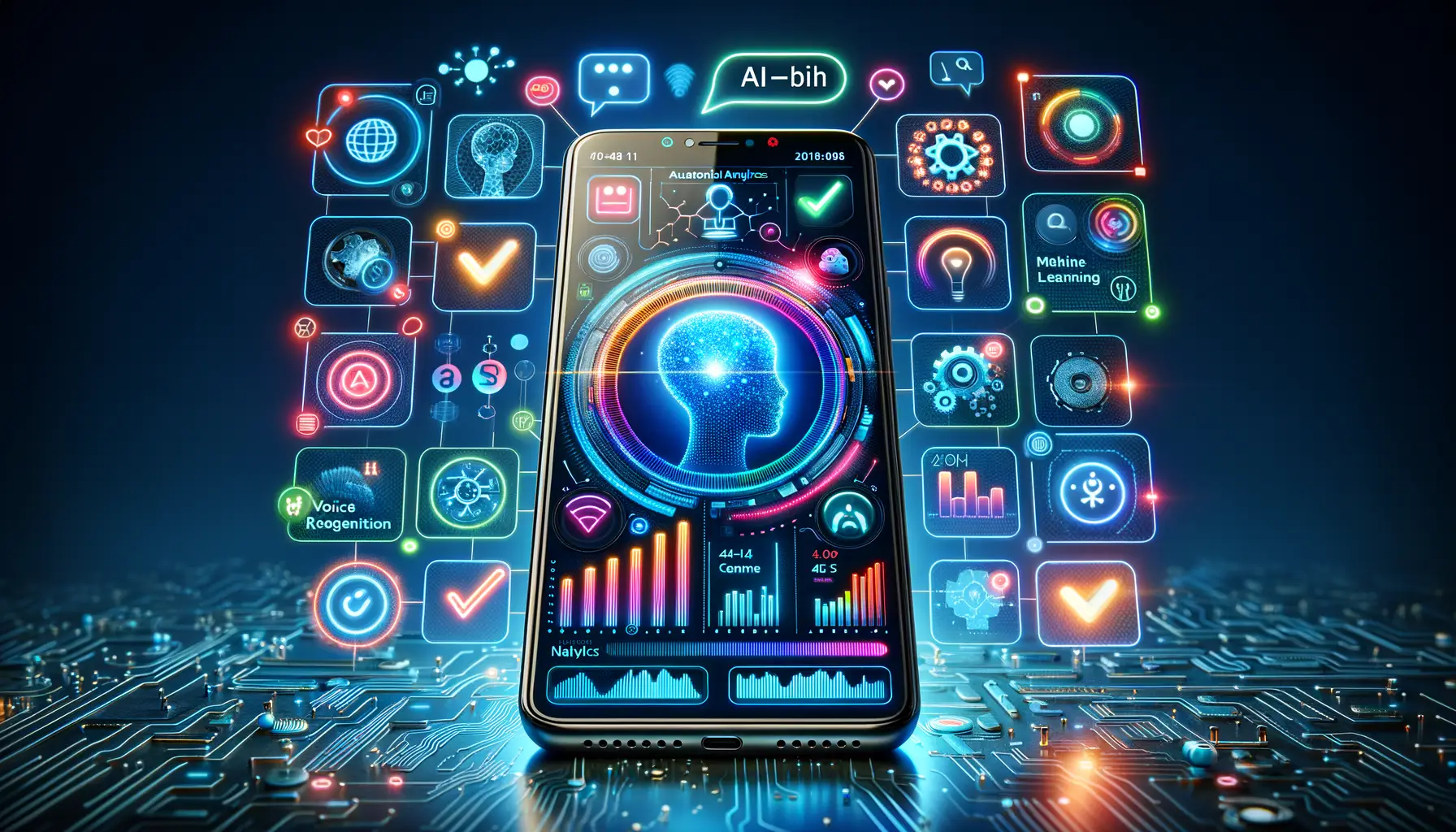Understanding the Role of AI in Mobile App Development
How AI Transforms Ordinary Apps into Extraordinary Experiences
Let’s be honest—mobile apps aren’t just tools anymore; they’re our daily companions, life-simplifiers, and sometimes even our guilty pleasures. But what really makes some apps feel almost magical? The answer lies in the sneaky yet genius integration of artificial intelligence.
AI isn’t just a buzzword thrown into the mix to sound futuristic. It’s the powerhouse that makes your fitness app know just when to suggest a new workout. Or why your favorite e-commerce app somehow “gets” your style after only three searches.
What Can AI Actually Do for Your App?
AI is like that multi-talented friend who’s good at everything. It can:
- Predict user behavior: Think recommendation engines on Netflix or Spotify. It feels like the app knows you better than your best friend.
- Enable smarter interactions: Virtual assistants like Siri or Alexa are prime examples of how AI makes conversations with tech feel… human.
- Learn over time: With machine learning, apps evolve based on trends, patterns, and user input, staying sharp and relevant.
The real magic? AI enables mobile apps to meet your needs before you’ve even realized what they are, delivering experiences tailored uniquely to you. It doesn’t get more personalized than that!
Benefits of Integrating AI into Mobile Apps

Transforming User Experiences with AI
Imagine opening a mobile app that seems to **get you**. It predicts what you want before you even know it yourself. That’s the magic of integrating Artificial Intelligence (AI) into mobile apps—it’s not just an upgrade, it’s a revolution in interaction.
AI personalizes every moment. Picture this: a fitness app that adjusts your workout plan dynamically based on how well you slept last night or a shopping app that suggests items tailored precisely to your tastes (yes, even your love for quirky socks!). This isn’t generic service; it’s hyper-personalized care at scale.
And let’s not forget efficiency! AI can streamline mundane tasks, turbocharging speed and accuracy. Think chatbots responding instantly to customer queries or sophisticated algorithms organizing massive data in milliseconds.
Key Advantages You Can’t Ignore
If you’re wondering what sets AI-powered apps miles ahead, here’s the secret sauce:
- Smart automation: No more repetitive tasks—apps handle them seamlessly, giving users time to focus on what matters.
- Predictive analysis: From weather updates to Netflix recommendations, AI-powered predictions keep users one step ahead.
- Enhanced security: Machine learning detects suspicious activity early, safeguarding users like a digital bodyguard.
- Greater accessibility: Features like voice recognition and natural language processing empower differently-abled users.
Ultimately, AI doesn’t just improve mobile apps—it transforms them into smarter, more human companions.
Step-by-Step Process to Incorporate AI in Mobile Apps

Set the Foundation for AI Integration
Let’s kick things off with a strong base—like building a house, you need a solid blueprint before laying bricks. Start by identifying your app’s unique needs and how AI can enhance its functionality. Are you looking to deliver personalized recommendations, create jaw-dropping image recognition, or amp up customer support with chatbots? Map out these goals first.
Next, it’s time to dive into data! AI thrives on data like plants thrive on water. Ensure your app has access to high-quality, well-structured information. If your data looks like a messy closet, clean it and organize it into neatly labeled shelves (aka structured data sets).
- Analyze your audience: Who uses your app? What problems do they face? How can AI solve them?
- Choose the right AI technology: From NLP (Natural Language Processing) to machine learning, each tool offers its own magic.
From Coding to Testing: The Build Phase
Now comes the fun part—bringing AI to life within your app. Collaborate closely with developers using cloud-based AI platforms like Google AI or TensorFlow. These platforms simplify complex algorithms and save weeks of coding headaches.
Don’t stop at integration; test relentlessly. Imagine your AI feature is an apprentice—train it, guide it, and iron out any quirks during this stage. Use beta testers to see if the magic feels, well, magical. Debugging here is like polishing a diamond—it may take time, but the sparkle is worth it.
Challenges and Solutions in Implementing AI

Overcoming Technical Hurdles
Let’s be real—implementing AI isn’t always a smooth ride. It’s less like downloading an app and more like assembling a 1,000-piece puzzle where some pieces keep changing shape! One major roadblock? Data quality and quantity. AI thrives on data, but if your data is incomplete or inconsistent, you’re feeding your virtual genius junk food. Scary, right?
Another challenge lies in choosing the right AI model. With so many options, from neural networks to decision trees, it’s easy to feel like you’re lost in a forest of algorithms. Each one has strengths, but which one truly fits your app’s needs?
And let’s not forget the elephant in the room—integration. Plugging AI into a mobile app often feels like trying to add jet engines to a car without breaking the chassis. Oh, and have we mentioned costs? High-end AI models can burn through your development budget faster than you’d expect.
- Solution: Start by cleaning and structuring your data. Think of it as giving your AI a diet rich in intelligence-building nutrients.
- Work with experts who can recommend the best-fit AI architecture for your exact goals.
- Consider scalability early—choose tools and frameworks that won’t need an overhaul after six months.
The Human Element in AI Integration
Surprising, isn’t it? But a lot of AI issues are as human as they come. Developers sometimes struggle with the steep learning curve of mastering machine learning frameworks. After all, TensorFlow or PyTorch aren’t exactly “plug-and-play.” To make things trickier, stakeholders can feel left out during the process, overwhelmed by the tech-speak and long timelines.
And then there’s trust. Users aren’t quick to embrace apps with AI unless it feels natural—and safe. Imagine opening a fitness app only to feel spied on by its overly “friendly” suggestions. Creepy, right?
What’s the fix? Invest in upskilling your teams so they view AI not as a threat, but as a tool. Communication is key too—translate technical progress into plain language for non-tech folks. As for user trust, bake transparency into your app. Show them how your AI works, where it gets its insights, and why they’re valuable. When users feel informed, skepticism melts away.
Future Trends in AI and Mobile App Development

AI’s Role in Your Pocket: The Next Big Things
The future of AI in mobile app development feels like peeking into a sci-fi movie—but it’s happening now, right in your pocket! Imagine apps that not only respond to your commands but *anticipate* them. This isn’t just innovation; it’s about creating experiences that connect deeply with users, making technology feel almost human.
One blazing trend is the rise of personalized AI companions. Mobile apps are evolving to become smarter listeners and problem-solvers. Picture this: you open a fitness app, and instead of generic advice, it remembers your bad knees, today’s mood, and yesterday’s cheat meal—tailoring every suggestion down to the detail.
- Generative AI: Tools like GPT-based integrations will allow apps to generate unique content—from on-the-fly stories for kids to professional-grade image editing.
- AI-powered healthcare assistants: Think apps that monitor your vitals in real time through wearable tech, alerting doctors before symptoms even surface.
Hyper-Personalization Meets Predictive Magic
But hold on—this isn’t just about smarter apps. It’s about companies using predictive insights to stay ten steps ahead. For example, a travel app might book your flight before you’ve even Googled “cheap tickets.” Thanks to behavioral patterns and advanced machine learning, apps are becoming more intuitive than ever.
And let’s not forget the growing adoption of AI ethics. Developers are beginning to incorporate fairness algorithms, ensuring unbiased AI interactions. The vision? A future where your apps aren’t just tools but trusted allies. Ready or not, the next phase of mobile evolution is calling—don’t leave it on read!
